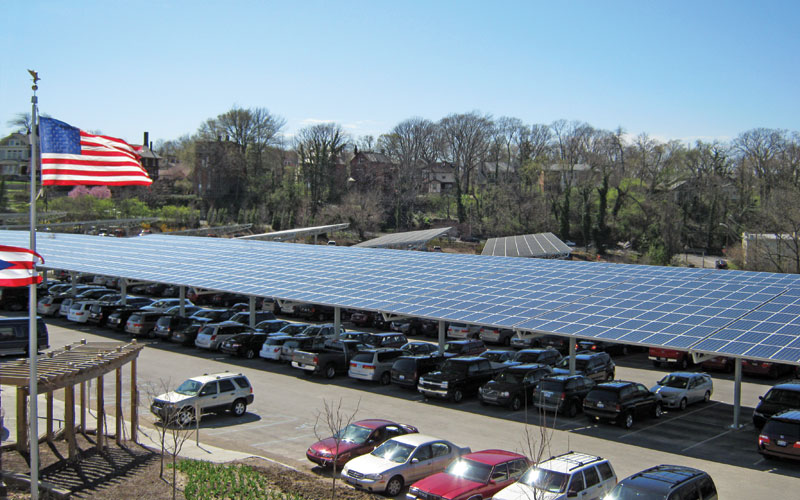In a column last week, David Brooks of the New York Times took aim at green energy. His aim was way off, and his readers deserve better.
Mr. Brooks’s column, “A Sad Green Story”, sparked considerable eloquence about the many things wrong with it. The samples include ones by Media Matters, renewable energy entrepreneur Jigar Shah and best-selling author Andrew Winston, who called Brooks’ fundamental premise “patently false” and a “fantasy”, and ThinkProgress’s Joe Romm, who said it was “so myth-filled, it would be better termed a fairy tale.”
Given that, I want to focus on the one part that most got my goat: Mr. Brooks’s perpetuating the myth of the $90 billion green piece of the stimulus fund.
The Myth of the $90 Billion
In his column, Mr. Brooks said that the stimulus package included “$90 billion for renewable energy loans and grants.” He is right to include both loans and grants—some people seem not to know or understand the difference. But, as the Times itself had already shown in its debunking of that idea and as the numbers clearly show, he was wrong to say that it was all, or even mostly, for renewable energy.
The Council of Economic Advisors’ Recovery Act Fourth Quarterly Report might not show up in the airport bookstore or on the bestseller list, but it’s a useful place for good (real) data to understand these numbers and their context. Here’s where the $90 billion figure—those “government investment and tax incentives to lay the foundation for the clean energy economy of the future”—comes from, says the CEA:

Where the $90 billion is going. Lots of investments for lots of good things… but the renewable energy-connected wedges add up to less than one-third of the pie. (Data: Council of Economic Advisors)
- $29 billion for Energy Efficiency, including $5 billion to pay for energy efficiency retrofits in low-income homes;
- $21 billion for Renewable Generation, such as the installation of wind turbines and solar panels;
- $10 billion for Grid Modernization to develop the so-called “smart grid” that will involve sophisticated electric meters, high-tech electricity distribution and transmission grid censors, and energy storage;
- $6 billion to support domestic manufacturing of advanced batteries and other components of Advanced Vehicles and Fuels Technologies;
- $18 billion for Traditional Transit and High-Speed Rail;
- $3 billion to fund crucial research, development, and demonstration of Carbon Capture and Sequestration technologies;
- $3 billion for Green Innovation and Job Training to invest in the science, technology, and workforce needed for a clean energy economy; and
- about $2 billion in Clean Energy Equipment Manufacturing tax credits that will partner with private investment to increase our capacity to manufacture wind turbines, solar panels, electric vehicles, and other clean energy components domestically.
Doing the Math
Those bullets add up to a little over $90 billion. What they don’t add up to, no matter how you slice them, is $90 billion for renewable energy. Even if you include all three most renewables-y pieces—renewables themselves, green innovation and job training, and clean energy equipment manufacturing—those account for some $26 billion.
For those of you without a calculator handy, I’ll do the math that Mr. Brooks failed to: that’s less than 100%. Far less. In fact, it’s well under one-third of the $90 billion pot.

Renewable energy is definitely spreading. But not with $90 billion in stimulus money.
Energy efficiency (the largest chunk of the investment pool) is a great thing to invest in, but it’s not renewable energy. Investments in transit and advanced vehicles can make a whole lot of sense, but unless those investments are all about solar-powered cars (they aren’t), that’s not renewables either. And $6 billion for carbon capture? ‘Nuff said.
Billions of dollars from the federal government for renewable energy isn’t small potatoes, though it pales in comparison to what the private sector is putting in (adding up to $51 billion for renewable energy in the U.S. in 2011 alone). But as I’ve said elsewhere, the danger in investing as a nation, through both the private and public sectors, isn’t likely that we’ll invest too much, but that we’ll invest too little.
David Brooks is a smart guy with a lot of insight about a whole lot of important things. It’s a shame that last week he left his insight on the bedside table—right next to the no-doubt-energy-efficient light, maybe one even powered by wind or solar… whether he knows it or not.
